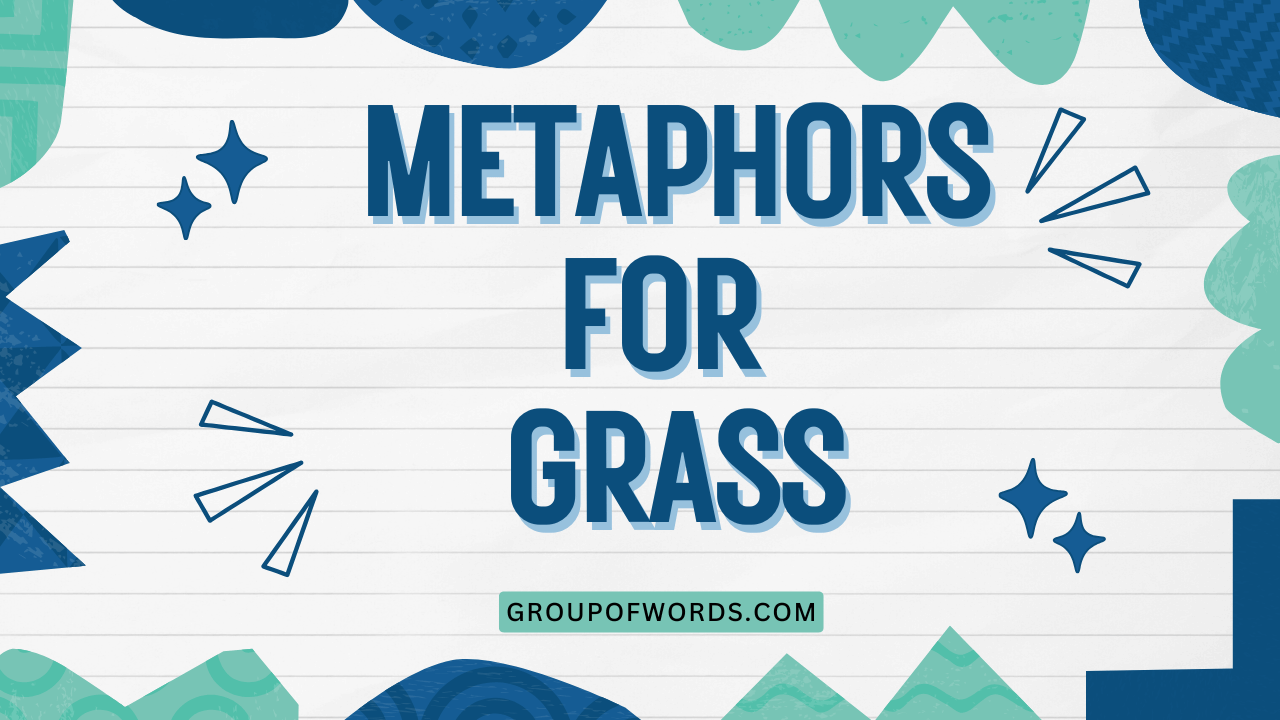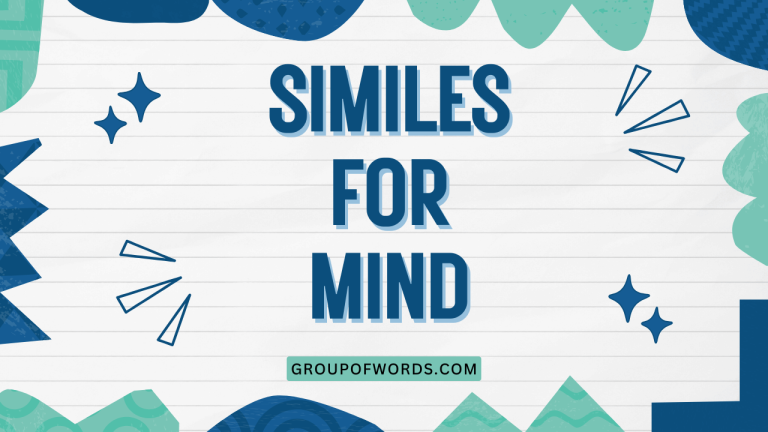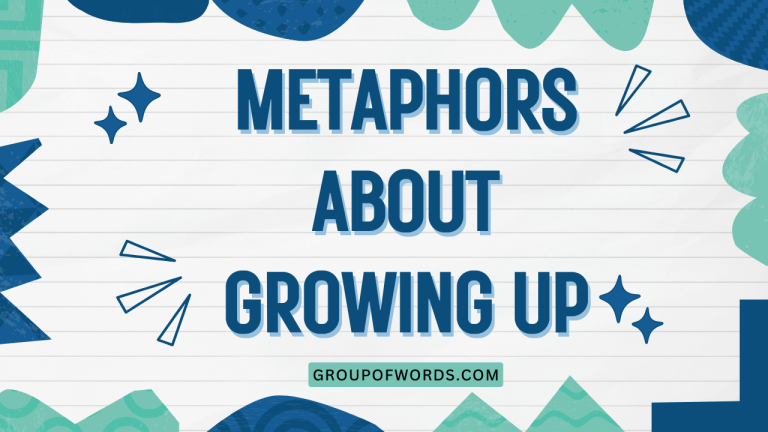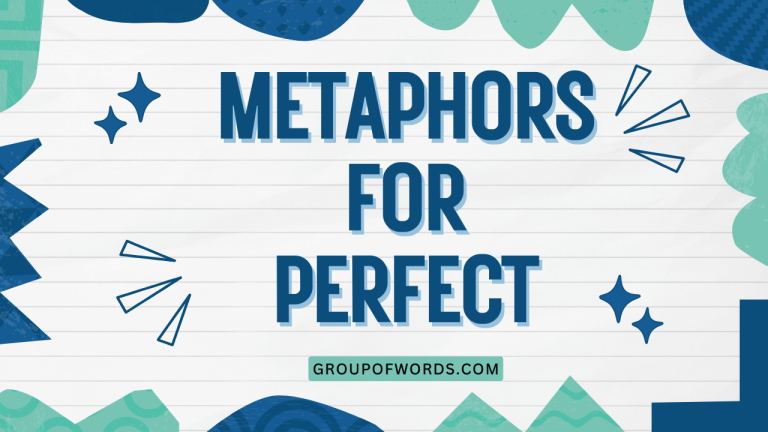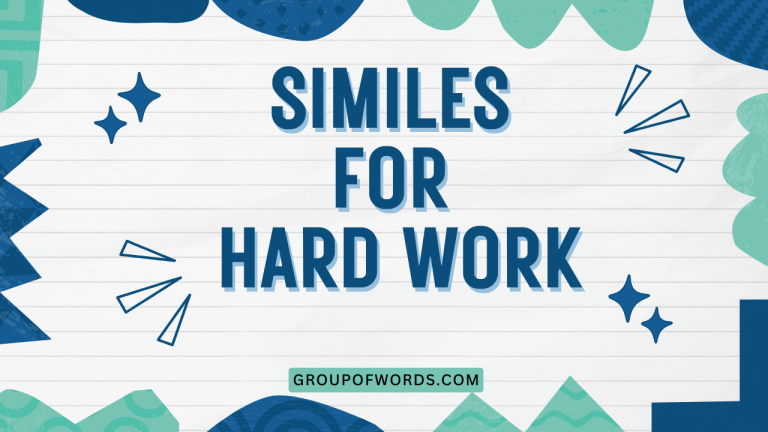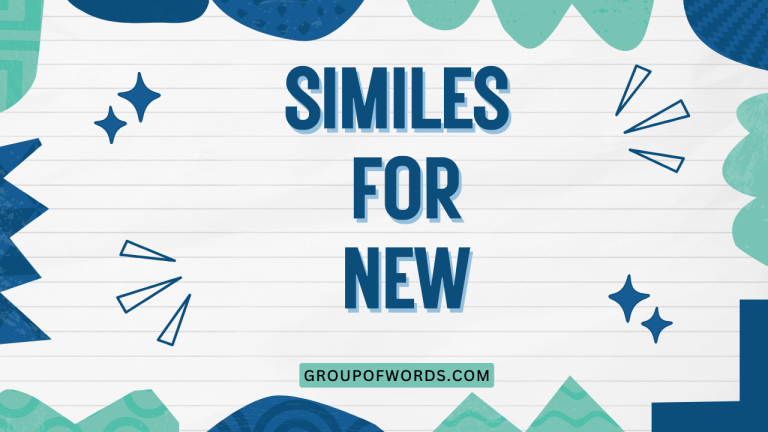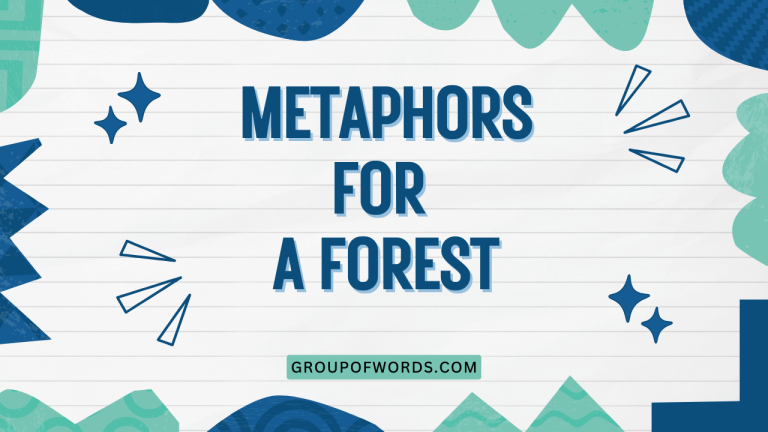Verdant Visions: Mastering Metaphors for Grass in English
Metaphors are essential tools in the English language, allowing us to paint vivid pictures and convey complex ideas in a concise and engaging manner. Understanding how metaphors work, particularly when applied to common subjects like grass, enhances both our comprehension and creative expression.
This article delves into the world of grass metaphors, exploring their diverse forms, functions, and applications. Whether you’re a student, writer, or simply an enthusiast of language, this guide will equip you with the knowledge and skills to effectively use and interpret grass metaphors in your everyday communication.
By mastering this aspect of figurative language, you’ll not only enrich your vocabulary but also gain a deeper appreciation for the nuances of the English language. This comprehensive exploration will include definitions, structural breakdowns, various types of metaphors, extensive examples, usage rules, common mistakes, practice exercises, and advanced topics, ensuring a thorough understanding of this fascinating subject.
Table of Contents
- Introduction
- Definition of Metaphor and Its Application to Grass
- Structural Breakdown of Grass Metaphors
- Types of Grass Metaphors
- Examples of Grass Metaphors
- Usage Rules for Grass Metaphors
- Common Mistakes When Using Grass Metaphors
- Practice Exercises
- Advanced Topics in Grass Metaphors
- Frequently Asked Questions (FAQ)
- Conclusion
Definition of Metaphor and Its Application to Grass
A metaphor is a figure of speech that directly compares two unlike things without using “like” or “as.” Its purpose is to create a vivid image or understanding by associating the qualities of one thing with another. In simpler terms, it’s a way of saying something *is* something else, even if it isn’t literally true.
When applied to grass, metaphors can describe its appearance, texture, behavior, or the feelings it evokes. For example, saying “The grass is a carpet” doesn’t mean the grass is actually a carpet; it means it shares qualities with a carpet, such as being soft, flat, and covering a large area.
This comparison helps the reader or listener visualize the grass more effectively and understand its characteristics in a new light.
Metaphors related to grass can be used to describe various aspects, including its color (e.g., “emerald waves”), its movement (e.g., “dancing blades”), its texture (e.g., “velvet expanse”), or its role in the environment (e.g., “the earth’s green hair”). The key is to find a connection between grass and something else that enhances the description or conveys a specific meaning.
Structural Breakdown of Grass Metaphors
Understanding the structure of a metaphor helps in both creating and interpreting them effectively. A metaphor typically consists of two main elements: the **tenor** and the **vehicle**.
The tenor is the subject being described (in this case, grass), and the vehicle is the object or concept used to describe the tenor (e.g., carpet, emerald, waves).
The **ground** is the shared characteristic or similarity between the tenor and the vehicle. In the example “The grass is a carpet,” the ground is the shared quality of being a soft, flat covering.
Recognizing the ground is crucial for understanding the intended meaning of the metaphor.
Furthermore, a metaphor can be either **explicit** or **implicit**. An explicit metaphor directly states the comparison, such as “The grass is a sea of green.” An implicit metaphor, on the other hand, implies the comparison without directly stating it.
For example, “The emerald blades swayed in the breeze” implicitly compares the grass to emeralds through the adjective “emerald.”
The effectiveness of a metaphor depends on the clarity and relevance of the connection between the tenor and the vehicle. A strong metaphor creates a vivid and memorable image, while a weak metaphor may be confusing or ineffective.
Considering the context and audience is also essential when choosing or interpreting metaphors.
Types of Grass Metaphors
Grass metaphors can be categorized based on the specific aspects of grass they emphasize. Here are some common types:
Nature-Related Metaphors
These metaphors compare grass to other elements of nature, highlighting its role in the natural world. Examples include comparing grass to a sea, a forest floor, or a green blanket covering the earth.
Color-Based Metaphors
These metaphors focus on the color of grass, often using vibrant and descriptive terms. Examples include comparing grass to emeralds, jade, or a canvas of green.
Texture-Based Metaphors
These metaphors emphasize the feel of grass, using words that evoke tactile sensations. Examples include comparing grass to velvet, silk, or a soft cushion.
Life Cycle Metaphors
These metaphors relate to the growth, death, and renewal of grass, often symbolizing life and resilience. Examples include comparing grass to a cycle of rebirth, a symbol of growth, or a testament to nature’s endurance.
Emotional or Symbolic Metaphors
These metaphors associate grass with specific emotions or symbolic meanings, such as peace, tranquility, or hope. Examples include comparing grass to a symbol of serenity, a reminder of simpler times, or a promise of new beginnings.
Examples of Grass Metaphors
This section provides an extensive list of grass metaphors, categorized by type, to illustrate the diverse ways in which grass can be described metaphorically. The tables below offer specific examples, making it easier to understand and apply these metaphors in various contexts.
The following table showcases nature-related metaphors for grass. These metaphors often highlight the expansive and encompassing nature of grass, drawing parallels with other natural elements.
| Metaphor | Explanation |
|---|---|
| The grass is a sea of green. | Emphasizes the vastness and uniformity of a grassy area. |
| The lawn is an emerald carpet. | Highlights the lushness and even texture of a well-maintained lawn. |
| The field is a blanket of green. | Suggests a sense of comfort and protection provided by the grass. |
| The meadow is a verdant tapestry. | Implies a rich and intricate pattern of different shades of green. |
| The grass is the earth’s green hair. | Personifies the earth and gives the grass a natural, organic quality. |
| The pasture is a table set for grazing animals. | Suggests the nourishing and life-sustaining role of grass. |
| The lawn is a stage for summer games. | Highlights the active and recreational use of grassy areas. |
| The grass is a whispering gallery for the wind. | Emphasizes the sound of wind rustling through the grass. |
| The field is a patchwork quilt of greens and browns. | Describes a varied landscape with different types and shades of grass. |
| The grass is a refuge for insects and small creatures. | Highlights the ecological importance of grass as a habitat. |
| The lawn is a cool oasis on a hot summer day. | Suggests the refreshing and relaxing quality of a grassy area. |
| The field is a canvas painted by nature. | Implies the natural beauty and artistry of a grassy landscape. |
| The grass is a living, breathing organism. | Emphasizes the vitality and life force of grass. |
| The meadow is a symphony of colors and textures. | Suggests a harmonious blend of different elements in a grassy environment. |
| The grass is a green river flowing through the landscape. | Emphasizes the movement and continuity of a grassy area. |
| The lawn is a welcoming mat for bare feet. | Highlights the comforting and inviting quality of grass. |
| The field is a treasure trove of hidden wildflowers. | Suggests the hidden beauty and diversity within a grassy area. |
| The grass is a silent witness to the passage of time. | Emphasizes the enduring and timeless quality of grass. |
| The meadow is a sanctuary for birds and butterflies. | Highlights the role of grass in supporting wildlife. |
| The lawn is a playground for children and pets. | Suggests the fun and recreational opportunities offered by grassy areas. |
| The grass is nature’s gentle caress. | Implies a soft and comforting touch. |
| The field is a stage for the sun’s golden performance. | Highlights the way sunlight illuminates the grass. |
| The grass is a groundswell of life. | Emphasizes the abundance of life it supports. |
| The lawn is a green heartbeat of the neighborhood. | Suggests its central and vital role. |
| The field is a green dream. | Implies a peaceful and idyllic scene. |
The following table focuses on color-based metaphors for grass. These metaphors use vivid color imagery to enhance the description of grass, often evoking specific emotions and impressions.
| Metaphor | Explanation |
|---|---|
| The grass is emerald fire. | Highlights the vibrant green color and life force of the grass. |
| The lawn is a jade expanse. | Emphasizes the smooth, green surface of the grass. |
| The field is a canvas of viridian. | Suggests a rich, deep green color, like a painting. |
| The grass is chartreuse in the morning light. | Describes a bright, yellowish-green hue. |
| The lawn is a malachite stone, polished smooth. | Implies a deep green color and a smooth, well-maintained surface. |
| The field is a verdant ocean. | Emphasizes the deep green color and undulating surface. |
| The grass is a lime sorbet, cool and refreshing. | Suggests a light, bright green color and a refreshing quality. |
| The lawn is a forest green, deep and inviting. | Implies a rich, dark green color and a welcoming atmosphere. |
| The field is a sage green, calming and serene. | Describes a muted, grayish-green color and a peaceful feeling. |
| The grass is a neon green after the rain. | Highlights the vibrant, almost artificial-looking green color. |
| The lawn is a spring green, full of new life. | Suggests a fresh, vibrant green color and a sense of renewal. |
| The field is a moss green, soft and muted. | Describes a deep, soft green color. |
| The grass is olive green in the late summer. | Implies a darker, more subdued green color. |
| The lawn is a hunter green, rich and elegant. | Suggests a deep, sophisticated green color. |
| The field is a seafoam green, light and airy. | Describes a pale, slightly blue-tinted green color. |
| The grass is a pistachio green, unique and appealing. | Highlights a distinctive, slightly yellowish-green color. |
| The lawn is a pine green, dark and enduring. | Implies a deep, evergreen-like color. |
| The field is a fern green, delicate and intricate. | Describes a soft, detailed green color. |
| The grass is a celery green, crisp and fresh. | Suggests a light, slightly yellowish-green color. |
| The lawn is a spearmint green, cool and invigorating. | Implies a refreshing, slightly blue-tinted green color. |
| The grass is a jade jewel, sparkling with dew. | Emphasizes its precious and vibrant nature. |
| The field is an absinthe dream, intoxicatingly green. | Suggests an intense and almost surreal green. |
| The grass is a spring meadow in a bottle. | Highlights its essence of newness and vibrancy. |
| The lawn is a green mirror, reflecting the sky. | Suggests its smooth, reflective surface. |
| The field is a green symphony, played by the wind. | Implies a harmonious and lively scene. |
The following table explores texture-based metaphors for grass. These metaphors focus on the tactile qualities of grass, evoking a sense of touch and physical sensation.
| Metaphor | Explanation |
|---|---|
| The grass is velvet underfoot. | Emphasizes the soft, smooth texture of the grass. |
| The lawn is a cushion of green. | Suggests a comfortable and yielding surface. |
| The field is a soft, green rug. | Implies a comfortable and inviting texture. |
| The grass is a silk curtain swaying in the breeze. | Describes a smooth, flowing texture. |
| The lawn is a plush carpet of green. | Suggests a thick, luxurious texture. |
| The field is a wool blanket, warm and inviting. | Emphasizes a soft, cozy texture. |
| The grass is a bristly beard on the earth’s face. | Describes a rough, uneven texture. |
| The lawn is a smooth, green skin. | Implies a sleek, even texture. |
| The field is a scratchy canvas under bare feet. | Suggests a slightly rough, textured surface. |
| The grass is a soft sponge soaking up the rain. | Emphasizes its absorbent, yielding texture. |
| The lawn is a green velvet, worn smooth by time. | Implies a soft, well-used texture. |
| The field is a textured tapestry under the sun. | Describes a varied, uneven texture. |
| The grass is a soft brushstroke on the landscape. | Emphasizes a delicate, textured quality. |
| The lawn is a green fleece, warm and comforting. | Suggests a soft, cozy texture. |
| The field is a rough-hewn carpet of green. | Implies a slightly coarse, uneven texture. |
| The grass is a soft cloud beneath your feet. | Emphasizes a light, airy texture. |
| The lawn is a green braid, neatly interwoven. | Suggests a structured, textured pattern. |
| The field is a rough sea of green waves. | Describes an uneven, undulating texture. |
| The grass is a soft, green moss under the trees. | Implies a delicate, yielding texture. |
| The lawn is a green satin, shimmering in the light. | Suggests a smooth, lustrous texture. |
| The grass is a ticklish blanket on the hillside. | Highlights its playful and sensory nature. |
| The lawn is a green suede, soft yet resilient. | Emphasizes its luxurious and durable feel. |
| The field is a green corduroy, ribbed and textured. | Suggests a distinctive, ridged pattern. |
| The grass is a green waterfall of softness. | Implies a flowing, gentle texture. |
| The lawn is a green hug for bare feet. | Highlights its comforting and welcoming feel. |
Usage Rules for Grass Metaphors
Using metaphors effectively involves understanding certain rules and guidelines. First, **ensure the metaphor is appropriate for the context**.
A metaphor that works well in poetry may not be suitable for a scientific report. Consider the tone and audience of your writing or speech.
Second, **avoid cliché metaphors**. Overused metaphors, such as “green with envy,” have lost their impact and can make your writing sound unoriginal.
Strive to create fresh and imaginative comparisons.
Third, **maintain consistency**. Once you establish a metaphor, stick with it throughout the passage.
Mixing metaphors can create confusion and weaken your message. For example, avoid saying “The grass is a sea of green, but it also sings a song,” as it combines two unrelated images.
Fourth, **be clear and concise**. The purpose of a metaphor is to enhance understanding, not obscure it.
Ensure that the connection between the tenor and the vehicle is easily recognizable. Avoid metaphors that are too abstract or complex.
Finally, **consider the cultural context**. Some metaphors may have different meanings or connotations in different cultures.
Be mindful of your audience and choose metaphors that are universally understood or appropriately adapted.
Common Mistakes When Using Grass Metaphors
One common mistake is using **mixed metaphors**, where the comparison shifts inconsistently.
*Incorrect:* “The grass is a sea of green, and it’s also a fiery furnace of growth.” (Combines unrelated images of a sea and a furnace.)
*Correct:* “The grass is a sea of green, stretching as far as the eye can see.”
Another mistake is using **cliché metaphors** that lack originality.
*Incorrect:* “The grass is always greener on the other side.” (Overused and lacks impact.)
*Correct:* “The grass, though seemingly ordinary, held the promise of untold adventures.”
A third mistake is using **inappropriate metaphors** that don’t fit the context.
*Incorrect:* “The grass is a mathematical equation.” (Unrelated and confusing.)
*Correct:* “The grass is a carefully orchestrated symphony of nature.”
Finally, **overusing metaphors** can also be detrimental. While metaphors can enhance writing, too many can make it sound forced and artificial.
Use them sparingly and strategically.
Practice Exercises
Test your understanding of grass metaphors with these exercises. Identify the type of metaphor used in each sentence and explain its meaning.
Exercise 1: Identifying Types of Metaphors
| Question | Answer |
|---|---|
| 1. The grass is a velvet blanket, soft and inviting. | Texture-based metaphor. The grass is compared to a velvet blanket to emphasize its soft texture. |
| 2. The lawn is an emerald jewel, sparkling in the sun. | Color-based metaphor. The grass is compared to an emerald jewel to highlight its vibrant green color. |
| 3. The field is a green ocean, swaying in the breeze. | Nature-related metaphor. The grass is compared to an ocean to emphasize its vastness and movement. |
| 4. The grass is a symbol of hope, always growing anew. | Emotional/Symbolic metaphor. The grass represents hope through its continuous renewal. |
| 5. The lawn is a stage for summer dreams, where laughter echoes. | Nature-related metaphor. The lawn is compared to a stage, highlighting its role as a place for summer activities. |
| 6. The grass is a green whisper, carried on the wind. | Nature-related metaphor. The grass is compared to a whisper, emphasizing the sound it makes in the wind. |
| 7. The field is a canvas of viridian, painted by the rain. | Color-based metaphor. The grass is compared to a canvas of viridian, highlighting its rich green color. |
| 8. The grass is a soft cushion, perfect for a nap. | Texture-based metaphor. The grass is compared to a cushion, emphasizing its soft and comfortable texture. |
| 9. The lawn is a green heart, beating with life. | Emotional/Symbolic metaphor. The grass is compared to a heart, highlighting its vitality and importance. |
| 10. The field is a verdant tapestry, woven with wildflowers. | Nature-related metaphor. The grass is compared to a tapestry, emphasizing its intricate and varied appearance. |
Exercise 2: Creating Your Own Metaphors
| Question | Answer |
|---|---|
| 1. Create a nature-related metaphor for grass. | The grass is a green river flowing through the valley. |
| 2. Create a color-based metaphor for grass. | The lawn is a sea of chartreuse in the spring. |
| 3. Create a texture-based metaphor for grass. | The field is a bristly carpet under my bare feet. |
| 4. Create an emotional metaphor for grass. | The grass is a symbol of resilience, always returning after winter. |
| 5. Create a metaphor that describes the sound of grass in the wind. | The grass is a chorus of whispers, sighing secrets to the sky. |
| 6. Create a metaphor that describes the feeling of walking barefoot on grass. | The lawn is a gentle massage for weary feet. |
| 7. Create a metaphor that describes how grass looks after a rain. | The field is a sparkling ocean, each blade a tiny wave of light. |
| 8. Create a metaphor that describes the growth of grass. | The grass is an upward reaching hand, grasping for sunlight. |
| 9. Create a metaphor that describes the color of dried grass. | The lawn is a golden memory of summer days. |
| 10. Create a metaphor that describes the shape of individual blades of grass. | The grass is a collection of green needles, pricking the earth. |
Exercise 3: Correcting Incorrect Metaphors
| Question | Answer |
|---|---|
| 1. Correct: The grass is a sea of green, but it’s also a fiery volcano. | The grass is a sea of green, stretching endlessly under the sky. |
| 2. Correct: The lawn is always greener on the other side, like a shining star. | The lawn, though simple, held its own beauty. |
| 3. Correct: The field is a mathematical equation of nature’s design. | The field is a symphony of growth, orchestrated by nature. |
| 4. Correct: The grass is a soft blanket, singing a song of summer. | The grass is a soft blanket, inviting weary travelers to rest. |
| 5. Correct: The lawn is a stage for life, always moving and changing like a river. | The lawn is a stage for life, where every blade plays its part. |
| 6. Correct: The grass is a whispering gallery and a concrete jungle. | The grass is a whispering gallery, sharing secrets with the wind. |
| 7. Correct: The field is a canvas of viridian, also a book of dreams. | The field is a canvas of viridian, painted with morning dew. |
| 8. Correct: The grass is a soft cushion, hard as a rock. | The grass is a soft cushion, inviting you to lie down. |
| 9. Correct: The lawn is a green heart, cold and unloving. | The lawn is a green heart, pulsing with life and warmth. |
| 10. Correct: The field is a verdant tapestry, made of steel. | The field is a verdant tapestry, woven with wildflowers and sunshine. |
Advanced Topics in Grass Metaphors
At a more advanced level, grass metaphors can be explored within broader literary and cultural contexts. Consider how different authors and poets have used grass metaphors to convey themes of nature, life, and death.
For example, Walt Whitman’s use of grass in *Leaves of Grass* symbolizes democracy, growth, and the interconnectedness of all things.
Furthermore, explore the use of extended metaphors, where the comparison is sustained throughout an entire poem or passage. Analyze how these extended metaphors create a deeper and more nuanced understanding of grass and its significance.
Also, research the cultural significance of grass in different societies. In some cultures, grass is a symbol of prosperity and abundance, while in others, it represents simplicity and humility.
Understanding these cultural associations can enrich your interpretation of grass metaphors.
Finally, experiment with creating your own complex and multi-layered grass metaphors, pushing the boundaries of language and imagination. Consider how you can use metaphors to express your unique perspective on grass and its role in the world.
Frequently Asked Questions (FAQ)
Q1: What is the difference between a metaphor and a simile?
A: Both metaphors and similes are figures of speech that compare two unlike things. However, a metaphor directly states that one thing *is* another, while a simile uses “like” or “as” to make a comparison.
For example, “The grass is a carpet” is a metaphor, while “The grass is like a carpet” is a simile.
Q2: How can I avoid using cliché metaphors?
A: To avoid cliché metaphors, strive for originality and creativity. Think about the unique qualities of grass and find fresh and unexpected ways to describe them.
Use vivid language and sensory details to create a memorable image.
Q3: How do I know if a metaphor is effective?
A: An effective metaphor should be clear, concise, and relevant to the context. It should create a vivid image or understanding in the reader’s mind and enhance the overall message.
If the metaphor is confusing or doesn’t add value, it may not be effective.
Q4: Can I use multiple metaphors in a single sentence?
A: While it’s possible to use multiple metaphors in a single sentence, it’s generally best to avoid doing so, as it can become confusing and overwhelming. Focus on using one strong and well-developed metaphor instead.
Q5: How can I improve my ability to create metaphors?
A: To improve your ability to create metaphors, practice regularly and pay attention to the world around you. Observe the qualities of different things and look for unexpected connections.
Read widely and expose yourself to different styles of writing and speech. Consider taking a creative writing course or joining a writing group.
Q6: What role does context play in understanding metaphors?
A: Context is crucial for understanding metaphors. The meaning of a metaphor can vary depending on the surrounding words, sentences, and overall situation.
Consider the tone, purpose, and audience of the communication when interpreting metaphors.
Q7: Are there any cultural considerations when using metaphors?
A: Yes, some metaphors may have different meanings or connotations in different cultures. Be mindful of your audience and choose metaphors that are universally understood or appropriately adapted to the cultural context.
Research cultural associations to avoid unintentional offense or misinterpretation.
Q8: How can metaphors enhance my writing?
A: Metaphors can enhance your writing by making it more vivid, engaging, and memorable. They can help you convey complex ideas in a concise and accessible way and add depth and nuance to your descriptions.
By using metaphors effectively, you can create a stronger connection with your readers and leave a lasting impression.
Conclusion
Mastering metaphors for grass opens up a world of creative expression and deeper understanding. By grasping the definitions, structural elements, and various types of metaphors, you can effectively use them to enrich your communication and convey complex ideas with clarity and impact.
Remember to consider the usage rules, avoid common mistakes, and practice regularly to hone your skills.
Through the extensive examples and practice exercises provided in this guide, you’ve gained the tools to create vivid images and evoke powerful emotions through your use of grass metaphors. Continue to explore the nuances of language, experiment with different comparisons, and embrace the power of figurative language to transform your writing and speaking.
Keep practicing, and you’ll find that your ability to craft compelling metaphors will grow with each use, enhancing your communication and creative expression.
By embracing the verdant visions that metaphors offer, you can transform the ordinary into the extraordinary and bring your words to life. So, go forth and let your imagination take root, allowing your language to flourish like a field of vibrant, expressive grass.
